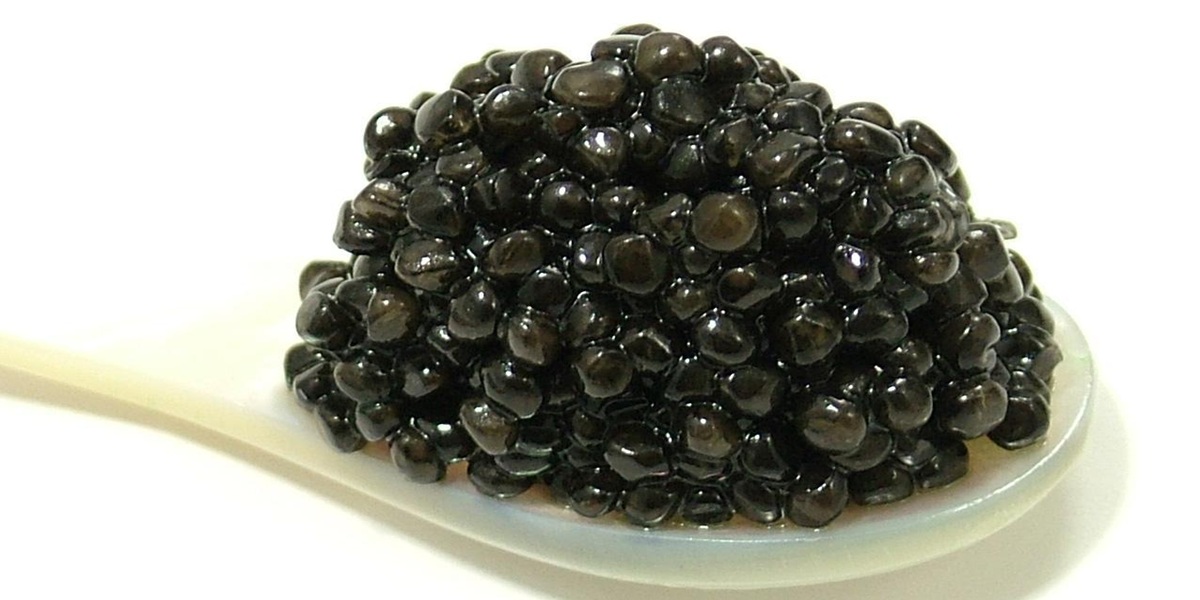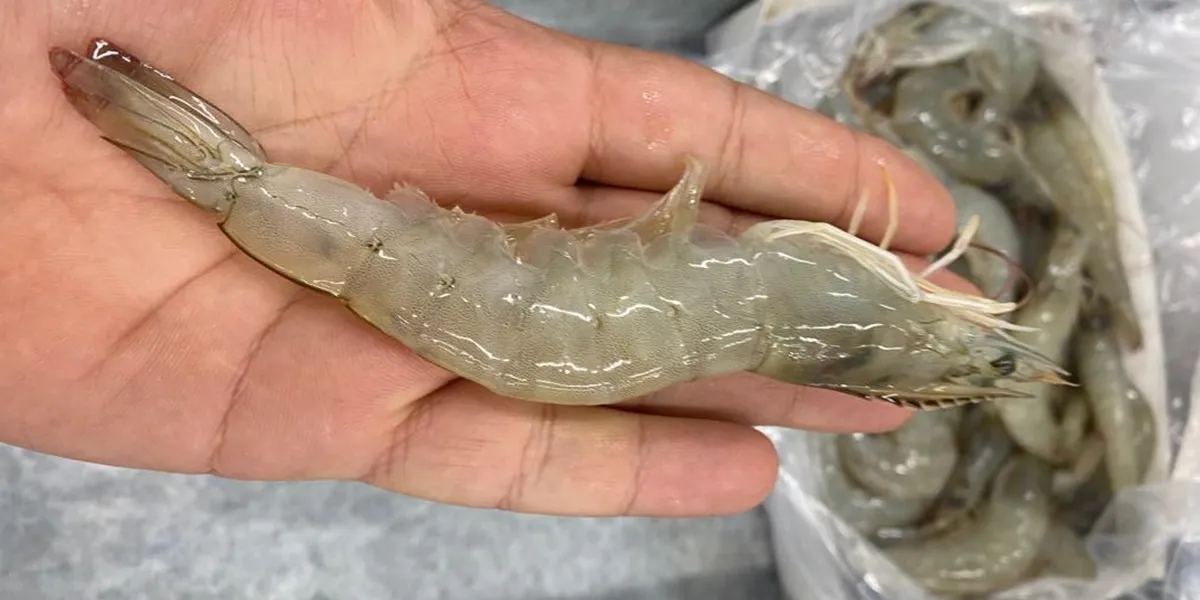Few delicacies in the world capture the essence of luxury like rare caviar. These shimmering pearls of the sea are more than just a culinary indulgence—they are a testament to history, tradition, and meticulous craftsmanship. From the legendary Almas caviar, derived from rare albino sturgeons, to the bold and briny Sevruga, each variety tells a unique story of time, nature, and expertise. But what truly makes a caviar rare? Is it the rarity of the sturgeon species, the geographical conditions, or the delicate aging process?
Understanding rare caviar is not just about knowing the names; it’s about appreciating the depth of flavor, the careful harvesting techniques, and the artistry behind every spoonful. In this guide, we explore the world’s most exclusive caviar varieties, their unique characteristics, and what sets them apart from the rest. Dive into this fascinating journey and discover what makes rare caviar an experience like no other.
Almas Caviar: The Golden Treasure of the Caspian Sea
Almas Caviar is one of the most legendary and sought-after varieties in the world. Sourced from the rare Albino Beluga sturgeon, which can take decades to mature, this caviar is prized for its distinctive golden hue. The rarity of the albino sturgeon, combined with the meticulous harvesting process, makes Almas a true delicacy.
Its texture is incredibly delicate, with a creamy consistency that melts on the tongue. The flavor is a perfect balance of subtle saltiness, buttery richness, and a lingering nutty aftertaste. This caviar is often enjoyed in its purest form—served on a mother-of-pearl spoon to preserve its natural taste.
Due to its exclusivity, Almas is traditionally sourced from pristine waters where sturgeons thrive in optimal conditions. The careful extraction and handling process ensure that each pearl maintains its integrity, offering a tasting experience unlike any other. It is best paired with neutral flavors that enhance its natural complexity, such as blinis, crème fraîche, or lightly toasted bread.
Kaluga Hybrid Caviar: The Elegant Fusion of Power and Grace
Kaluga Hybrid caviar is a remarkable alternative to the rare Beluga, offering a rich, buttery profile with a refined texture. This caviar is sourced from the Kaluga sturgeon, a species native to the Amur River, and is often hybridized with Amur sturgeon to enhance sustainability while preserving its luxurious characteristics.
The pearls of Kaluga Hybrid caviar are large, smooth, and have a glossy sheen, ranging from dark brown to olive green. When tasted, it delivers an exquisite burst of umami, with a lingering complexity that sets it apart from other varieties. The depth of its flavor comes from the controlled environments in which these sturgeons are carefully farmed, ensuring consistent quality and ethical sourcing.
Why Is Iranian Caviar the Best in the World? One of the reasons Kaluga Hybrid caviar is so cherished is its ability to mimic the creamy mouthfeel of Beluga while offering a slightly firmer texture. Its versatility makes it a favorite among chefs and caviar connoisseurs, often paired with light accompaniments that allow its luxurious flavor to shine.
Ossetra Karat Gold Caviar: A Jewel of the Caviar World
Ossetra Karat Gold caviar is known for its striking golden color and rich, nutty essence. Harvested from mature Ossetra sturgeons, this variety stands out for its medium-sized, firm pearls that burst with flavor upon contact with the palate.
What makes Karat Gold caviar unique is its depth of taste—earthy, buttery, and slightly briny, with a subtle minerality that lingers long after the first bite. It offers a perfect balance of intensity and delicacy, making it an ideal choice for both first-time caviar tasters and seasoned enthusiasts.
The process of cultivating Ossetra sturgeons is meticulous, requiring expert monitoring to ensure the highest quality roe. The resulting caviar is celebrated for its smooth texture and refined elegance. Best enjoyed simply, it pairs beautifully with champagne, dry white wines, and traditional accompaniments that highlight its nuanced flavors.
How to Identify High-Quality Caviar? The rich flavor, firm pearls, and unique golden hue are all indicators of high-quality caviar, making Ossetra Karat Gold a prime example of the luxurious indulgence that top-tier caviar offers.
Beluga Caviar: The Icon of Sophistication
Beluga caviar is synonymous with luxury and exclusivity. Known for its large, soft pearls and signature creamy texture, this caviar is harvested from the Beluga sturgeon, one of the oldest and largest species of sturgeon in the world.
The flavor profile of Beluga caviar is rich and buttery, with a delicate oceanic essence that sets it apart from other varieties. It offers a long, smooth finish, allowing the intricate flavors to evolve on the palate. The rarity of Beluga sturgeons, combined with their slow maturation process, makes this caviar one of the most sought-after in the culinary world.
The Health Benefits of Caviar: More Than Just a Luxury Food While known for its luxury, Beluga caviar also provides a wealth of health benefits, including high levels of omega-3 fatty acids and essential vitamins that support brain function and cardiovascular health.
Beluga caviar is traditionally served with minimal adornment to allow its natural characteristics to shine. A mother-of-pearl spoon, a glass of fine champagne, and a quiet moment of indulgence are all that’s needed to fully appreciate this exquisite delicacy.
Sevruga Caviar: Bold, Briny, and Exquisitely Refined
Sevruga caviar is known for its intense, briny flavor and delicate pearls that offer a satisfying pop with every bite. Harvested from the Sevruga sturgeon, one of the smaller species, this caviar matures more quickly than other varieties, giving it a unique taste that is bolder and more pronounced.
The pearls of Sevruga caviar are small and dark, with a glossy appearance that hints at their complex taste. Unlike the creamy notes of Beluga or the nutty depth of Ossetra, Sevruga delivers a sharp, oceanic burst that is both refreshing and invigorating.
This caviar is perfect for those who appreciate a more pronounced marine flavor. Its versatility allows it to be used in a variety of dishes, from simple blini pairings to more elaborate gourmet preparations. The depth and clarity of its taste make it a favorite among chefs and caviar lovers who seek a more pronounced caviar experience.
The Art of Caviar Aging: Does Time Enhance Its Quality?
Caviar aging is a delicate process that significantly impacts its flavor, texture, and overall quality. While many people assume that fresher caviar is always better, aging can actually enhance its depth and complexity when done correctly. The process, known as maturation, allows caviar to develop a richer umami taste and a more refined texture.
Fresh caviar is typically milder in flavor, with a light briny essence. However, when aged under controlled conditions, the natural enzymes within the roe break down proteins and fats, intensifying the flavor while maintaining the delicate pop of the pearls. Traditional caviar houses age their caviar in tin containers, carefully monitoring temperature, humidity, and oxygen exposure. This controlled environment allows the caviar to mature without losing its essential characteristics.
One of the key factors in caviar aging is malossol, a Russian term meaning “lightly salted.” Malossol caviar, containing less than 5% salt, is best suited for aging as the low salt content prevents excessive dehydration while preserving the integrity of the pearls.
Different caviar varieties respond uniquely to aging. Beluga caviar, for instance, benefits from extended aging, developing a creamier texture and deeper buttery notes. Ossetra caviar gains a nutty richness, while Sevruga caviar, with its naturally bold and briny profile, may not require as much aging to reach peak flavor.
Aged caviar should be stored at precise temperatures between -2°C to +2°C (28°F to 35°F) to maintain its optimal taste and texture. Improper storage can lead to flavor degradation or an overly firm texture.
For caviar connoisseurs, aged caviar offers a distinctive tasting experience, where subtle flavors evolve and blend into a harmonious balance. Whether enjoyed fresh or aged, high-quality caviar remains a timeless delicacy with an unparalleled depth of flavor.
Sustainable Caviar: The Future of Ethical Indulgence
As the demand for rare caviar continues to grow, sustainability has become a crucial factor in the industry. Overfishing and habitat destruction have led to the decline of wild sturgeon populations, making ethical caviar production essential for preserving these ancient species. Sustainable caviar farming offers an alternative that balances luxury with environmental responsibility.
Modern aquaculture techniques allow caviar to be harvested without harming the sturgeon. No-kill caviar extraction, also known as striping or milking, involves gently massaging the sturgeon’s abdomen to release the eggs without causing harm. This method allows the fish to continue producing caviar throughout its lifespan, significantly reducing the need for wild harvesting.
Sturgeon farming in controlled environments also ensures consistent quality and eliminates exposure to pollutants commonly found in open waters. Farms mimic natural conditions, providing clean, oxygen-rich water and carefully monitored diets to maintain the health of the fish and the purity of the roe. Countries such as Germany, France, and the United States are leading the way in sustainable caviar production, setting high ethical and quality standards.
Sustainable caviar does not compromise on taste. Many farmed varieties, such as Ossetra and Kaluga Hybrid, have achieved the same level of complexity and refinement as their wild counterparts. Innovations in breeding and feed composition have allowed producers to replicate the unique flavors and textures that define premium caviar.
For ethical consumers, choosing certified sustainable caviar ensures they are supporting responsible practices while enjoying one of the world’s most exclusive delicacies. Certifications from organizations like CITES (Convention on International Trade in Endangered Species) help identify legally sourced caviar, ensuring that indulgence does not come at the cost of ecological harm.

Caviar in Fine Dining: How the World’s Best Chefs Serve Rare Caviar
Caviar has long been a staple in fine dining, offering a luxurious touch to some of the world’s most exquisite dishes. In Michelin-star restaurants, chefs treat caviar as more than just an ingredient—it is an experience. The way caviar is served, paired, and presented plays a crucial role in enhancing its delicate flavors.
The classic way to serve caviar is simple: chilled and unadorned, allowing its natural flavors to shine. High-end restaurants often present caviar in its purest form, served on mother-of-pearl spoons to prevent any metallic taste interference. Accompaniments such as blinis, crème fraîche, and lightly toasted brioche help balance the briny and buttery notes of the caviar.
In modern gastronomy, chefs experiment with innovative caviar pairings to elevate its flavor profile. Some unique serving methods include:
• Caviar and Wagyu Beef – The rich umami of Wagyu enhances the creamy, oceanic notes of high-grade caviar.
• Caviar on Oysters – A classic pairing that combines the freshness of oysters with the depth of caviar.
• Caviar with Foie Gras – The silky texture and fatty richness of foie gras provide the perfect contrast to caviar’s briny burst.
Molecular gastronomy has also introduced caviar-inspired creations, such as caviar foam, caviar-infused sauces, and even caviar pearls made from non-sturgeon sources. These culinary innovations allow chefs to incorporate the essence of caviar into new and unexpected dishes.
Ultimately, the beauty of caviar in fine dining lies in its versatility and ability to transform a dish into a refined masterpiece. Whether served traditionally or in a contemporary setting, rare caviar remains the ultimate expression of culinary artistry.
The Science of Caviar Texture: What Determines the Perfect Pearl?
The texture of caviar is one of its defining characteristics, playing a vital role in the overall tasting experience. From the firm pop of Ossetra pearls to the silky smoothness of Beluga, each variety offers a unique mouthfeel that contributes to its appeal.
Several factors influence caviar texture:
1. Sturgeon Species – Different sturgeon species produce varying caviar textures. Beluga caviar has the largest, most delicate pearls, while Sevruga is known for its smaller, firmer texture.
2. Maturation Time – Caviar harvested from older sturgeons tends to have firmer, more resilient pearls due to the natural strengthening of the egg membrane.
3. Salt Content – Malossol (low-salt) caviar retains a smoother, silkier texture, whereas higher salt levels can cause the pearls to shrink and toughen.
4. Storage Conditions – Proper temperature control prevents moisture loss, ensuring the pearls maintain their natural elasticity and burst on the tongue.
The perfect caviar texture should be smooth, with a delicate yet firm pop when pressed against the roof of the mouth. Overly soft caviar may indicate improper storage, while excessively hard caviar may have been over-processed or dried out.
Texture is just as important as flavor when it comes to caviar appreciation. A perfectly textured pearl elevates the entire sensory experience, making every bite luxurious and memorable.
Choosing the Right Caviar: A Connoisseur’s Guide
Selecting the right caviar requires more than just knowing the name of a variety. A true connoisseur considers multiple factors, from appearance and aroma to texture and flavor.
When choosing caviar, look for:
• Color and Luster – High-quality caviar should have a glossy sheen, ranging from golden hues (Ossetra) to deep black (Sevruga).
• Pearl Size and Uniformity – Consistency in size indicates careful grading and expert processing.
• Aroma – Fresh caviar should have a light, oceanic scent with no fishy or metallic odor.
• Taste Complexity – The best caviar offers layers of flavor, starting with a delicate saltiness, followed by nutty, creamy, or briny undertones.
Understanding these characteristics helps caviar lovers appreciate the finer details of this extraordinary delicacy. Whether you prefer the smooth richness of Beluga or the bold intensity of Sevruga, choosing the right caviar ensures an unforgettable culinary experience.
The Legacy of Rare Caviar and Its Timeless Appeal
Rare caviar is more than just a culinary luxury—it is a symbol of tradition, expertise, and nature’s finest offerings. Each variety has its own unique characteristics, from the golden elegance of Almas to the bold intensity of Sevruga. Understanding these distinctions allows for a deeper appreciation of what makes caviar one of the most treasured delicacies in the world.
As aquaculture advancements continue to shape the future of caviar, sustainability and ethical sourcing play an increasingly important role in preserving these rare varieties. Whether enjoyed as a gourmet indulgence or as part of a refined dining experience, rare caviar remains a timeless delicacy that captivates the senses and elevates any occasion.
Explore the world of rare caviar, discover its unparalleled flavors, and immerse yourself in the artistry behind this extraordinary delicacy.




